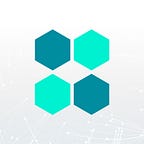The inter-blockchain space is growing with many projects that intend on solving the lack of communication between existing decentralized technologies. This article will compare OneLedger with Cosmos, Aion, and OverLedger. It will also show why OneLedger is focused on an entirely different set of problems.
These technologies are all competing to bind together the existing chains into a massive single entity. What makes OneLedger different is that we are not trying to sit over the other chains, but rather we are interested in bridging that decentralized ecosystem with the existing centralized enterprise space.
Our feature set, which includes programming interfaces, identity management, channels, business modules and master contracts were all designed to allow seamless integration for large enterprises.
Decentralized technologies are important to the future, but there will always be a need for centralized organizations to take on and manage responsibility. The design of OneLedger is all about mitigating the connection issues to allow a safe gateway between these two worlds, one that can be trusted to perform as needed.
To see this, we will compare ourselves to three of these projects. For a deeper understanding or to explore some of our many other features please see our Whitepaper.
OneLedger vs Cosmos (Tendermint)
● Cosmos is a generalized solution, the internet of blockchains, intended to bind together all of the chains and allow interactivity.
● OneLedger is a specialized solution that is meant to bridge the centralized world with the decentralized one. It is a reliable gateway between enterprise systems and the blockchain ecosystem.
OneLedger provides an SDK with a restful API that lets enterprise systems drive transactions across the chains. Along with this we have Smart Identity Management to help integrate and manage the different accounts and roles both internally and across the chains. We will be able to support chain interactivity, but as a byproduct of our allowing complex business modules to span multiple chains. While Cosmos will let tokens flow from one chain to another, OneLedger will focus on ensuring that actions performed on different chains will be synchronized.
OneLedger vs Aion (Nuco)
● Aion is a third generation design, whose hub and spoke model is focused on scaling and reliability. It easily connects public and private blockchains but explicitly requires that they integrate its protocol.
● OneLedger will also support private, or permissioned, chains between trusted third parties. Its optimizations will address scalability by allowing consistent access to all of the other chains and using less rigorous synchronization primitives when possible.
For general scalability, we’ll support multi-party side-chains, but we also expect that the demands of industries like finance will always mean that a large number of chains will continue to exist. Easy and consistent access across all of them will be necessary. Unlike Aion, OneLedger’s focus is not to be the master chain but to interact with others by offloading updates approved using OneLedger’s probability 1 Byzantine Fault Tolerant consensus scheme to occur as state changes to OneLedger.
OneLedger has channel consensus that will enable private chains as well as sidechains that correspond to other blockchains. They will be scoped so that state changes in a sidechain will eventually belong to the main chain and changes can be made visible to a trusted set of validators. These permissioned subsets can rely on optimizations when the parties are known a priori. These sidechains also support Arbitration for tighter consensus if disagreements arise.
OneLedger vs OverLedger (Quant)
● OverLedger seeks to provide an operating system for blockchains, with the aim of enabling dApp portability within the decentralized realm.
● OneLedger seeks to build the dApps on the centralized side, so that they can be tested in a controlled environment, then deployed and synchronized across the blockchain space.
OneLedger allows Master Smart Contracts that can be transpiled and deployed across the ecosystem. While this may seem similar to dApp portability, OneLedger seeks to build up the capabilities as Business Modules on the centralized side that provide usable primitives in the decentralized side. This layered architecture enables a framework that can grow in sophistication as the technologies mature. As well, it simplifies the mechanics and reduces testing. While the deployment of dApps on both platforms is obviously decentralized, on OverLedger the development of dApps must be decentralized while on OneLedger it does not have to be.
Other Projects
There are plenty of other cross chain projects. Many like Unibright and Cardstack are more focused on higher-level user issues and in integrating those with existing lower layers. There are others, such as Polkadot, ICON network and Wanchain that seek to be the dominant coin or blockchain. Many include features for businesses, but OneLedger differs from all these by being a gateway, not the dominant solution.
Summary
Many other features are discussed in our Whitepaper that both aid and amplify the ones we’ve already discussed. We highly recommend reading it to get the full width of our capabilities.
“Our mission” is to enable enterprises to get the most out of leveraging these new decentralized technologies, but in a way that still provides the necessary security and control that they expect from their own internal systems.
The blockchain eco-sphere will enable a new faster, more data intensive world that centralized organizations will need to access to. OneLedger is the reliable gateway that will allow that transition.
Sign up for our newsletter here: https://www.oneledger.io
Connect to our Telegram community here: https://t.me/oneledger
Follow us on Twitter: https://twitter.com/OneLedgerTech
